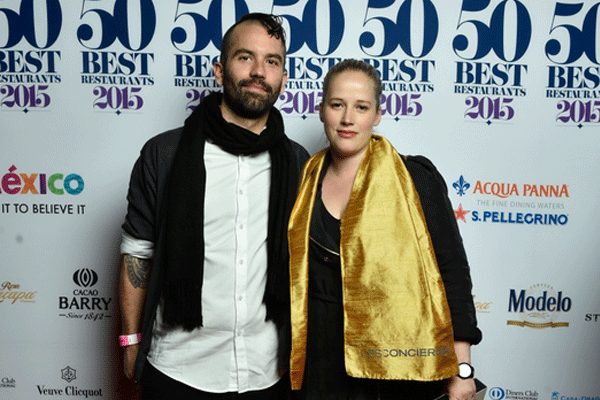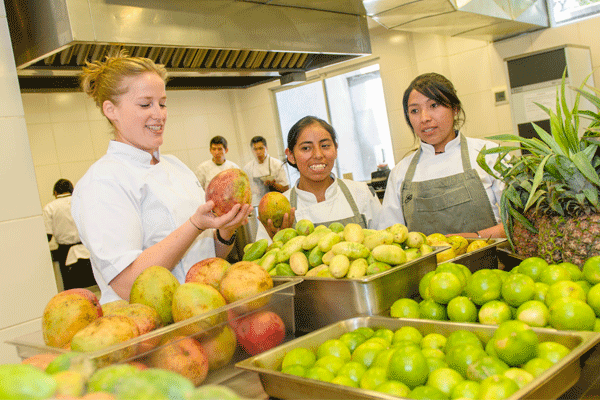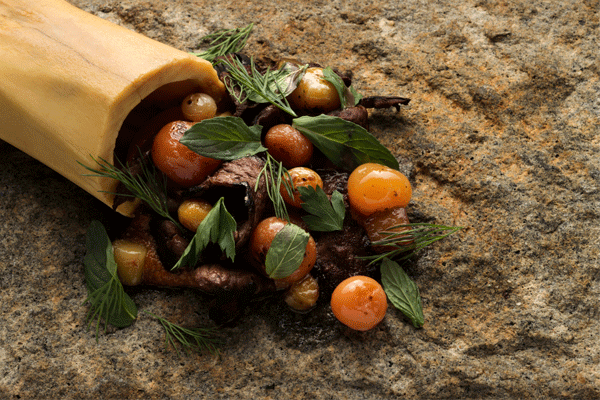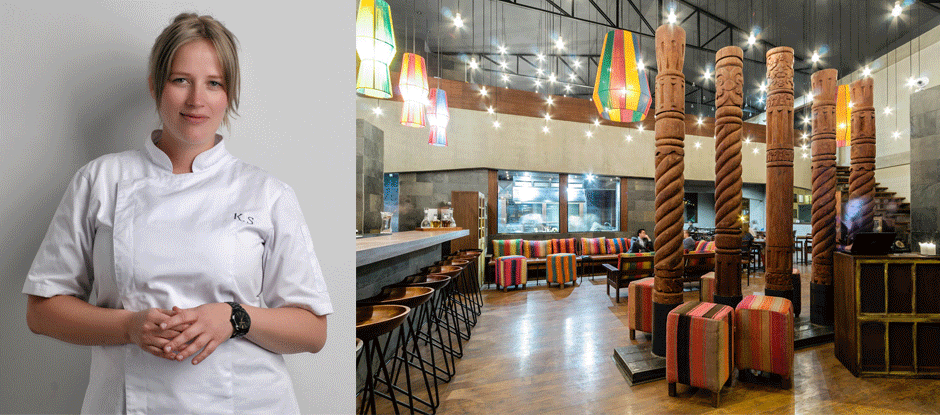A phone call from Noma co-founder Claus Meyer in 2012 changed the life path of Danish chef Kamilla Seidler. With her business partner Michelangelo Cestari, she helped set up a Bolivian food movement championing local ingredients and small farmers, which has spread across South America.
The restaurant, Gustu, has twice been named Bolivia’s Best Restaurant and now Seidler adds a personal accolade, the title of Latin America’s Best Female Chef.
We talked to the Copenhagen-born chef about social responsibility, purple potatoes and how Bolivia’s food scene is changing.
Tweet #LatAm50Best
My involvement in Gustu started on a Sunday afternoon when Michelangelo Cestari, my partner in crime and the CEO of Gustu, received a voicemail in Danish that he didn’t understand. It was Claus Meyer, the project manager of Gustu, asking if we would meet him.
Claus explained his mission of a Bolivian food movement and a culinary school for underprivileged young people. He chose us over a bunch of people who were freaking out over this opportunity so it’s all very blurred but very beautiful.
The job interview was cooking for Claus and his family in his house in Copenhagen. We did a four-course meal and then he said “If you want to do this, the job is yours.” After four months, we left for La Paz.
Kamilla and Michelangelo Cestari at the 2015 awards ceremony
We decided to go with a 100% Bolivian philosophy to make sure the people benefiting from this restaurant would be small producers and the whole food chain. From the education of young people to making sure producers would get a fair price and the client would sit in a Bolivian chair, everything would be about Bolivia because the country offers so much.
People get confused when they see me and hear me talk – am I Mexican, Argentine? I’ve become a little bit Latina.
I love the spirit of things in Bolivia. It’s colourful and lively and maybe not so organised, like in Copenhagen where the metro comes every three minutes, but somehow everything works out in the end.
It’s a bigger challenge for me as a person but also professionally to cook in Latin America than to cook in Copenhagen. I love the culture, the food, the fact that people help you here.
The strength of Bolivia is definitely the street food. You buy juice in a little bag with a straw and then you move on and it’s super cheap and very good.

Bolivia right now is like a very young version of the New Nordic movement. Young people who studied abroad are coming back and opening restaurants. We’re seeing a very fast-growing middle class, which is where the restaurant boom becomes a reality.
Not just in Bolivia but across Latin America, traditions that have been around for thousands of years, like fermentation, are coming back and being respected. Everything takes time but we’re definitely on the right path and seeing new restaurants opening up all the time.
Cooking in Denmark, I would imagine a menu then order the ingredients and see if I liked the results. In Bolivia it’s about deciding what we can make out of the products we have.
We can’t tell a family that can’t put shoes on its kids’ feet that we don’t want to buy their big potatoes. We have to use the potatoes from the small producer and that means buying the big potatoes, not just baby ones.
Kamilla's anticuchos with bone marrow and wacataya (image: Pablo Baracat Fotografia)
Street food inspires some of our dishes. But how do you take a dish like anticuchos [beef heart skewers] that costs $1 and charge up to $15 for it? For us, it’s about the preparation time that goes into it, maybe choosing a very special potato of a certain quality, or skimming the soup when we make the chicken reduction – it’s a lot more expensive to make if you skim the fat.
Bolivian food is… colourful. In the altiplano [the high Andean plateau] you have purple potatoes and in the jungle it’s colourful chillies. You’re cooking in a range of 6,000 metres distance but what you always have is colour.
We need to be careful about over-promoting just one product. We’ve seen the quinoa boom in Bolivia but they’re tearing down the biodiversity and their fields will die in a couple of years, so let’s promote amaranta and other grains at the same time.
I’m really proud to receive the Latin America’s Best Female Chef award. It means we’ve reached a lot of people and those people understand what we’re doing. It’s a very important prize to receive, especially in Bolivia where it’s difficult to stand up as a woman and say you want to become a cook.

